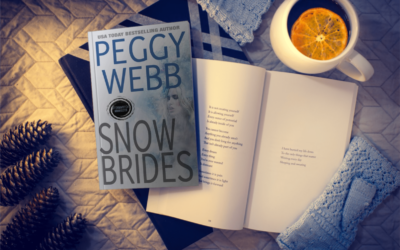Vicki Hinze © 2003-2011
(Blog Post)
When asked, a group of editors from top publishing houses, responded that the following are the most often seen mechanical errors in works submitted by authors.
By removing these errors from our works, we greatly enhance our potential for publication—and strengthen our writing skills.
* Author Intrusion, Filtering, Passive Voice.
Use the active voice in writing. Avoid weak verbs: “to be” and its variants: was, are, is. This puts the reader on-scene, makes what’s happening, happen now. Author intrusion reminds the reader she’s reading, hence you lose immediacy, empathy between reader/character.
Show, don’t tell applies. Watchwords: thought, wondered, considered, realized, and the like.
Example:
Filtered: She realized she’d breached the point of no return.
She had to kill him.
Unfiltered, no intrusion: The point of no return. She had to kill him.
* Autonomous Body Parts.
Parts of a character’s body cannot act alone. The character must lift her hands, dart her gaze, tiptoe. Otherwise, the visual images created in the reader’s mind are horror. Disconnected body parts shouldn’t move without the character’s body being attached.
Example:
Her eyes roamed around the room.
Corrected: She let her gaze roam around the room.
(Eyes shouldn’t roam. Use gaze. Note that she caused this roaming. In this corrected version, her eyes didn’t act autonomously or independent of her.)
* Cause before Effect, Reaction before Action, Syntax Error.
Whatever the reader reads first on the page, happens first in the readers mind. This error occurs when the reaction to something, say fear, is written down before the action causing the fear, say a hissing snake. Or when the effect is shown before the cause prompting that effect.
Watchwords are: when, as, before, during, while, until, after, and since.
To correct this error, simply flip-flop the phrases to be sure you list cause then effect, action then reaction.
* Use of names in dialogue.
* When conversing, people don’t often use names. To be clear about who’s speaking, give the character a distinct voice, an outstanding feature, and use action tags. Have character do something with an object and use it to make it clear to the reader who’s talking. This writer’s tool does double duty: tags the speaker and creates an illusion of action. Body language is an extremely effective method. Avoid: Figure, Frame, and Presence.
This editorial Pet Peeve doesn’t show up as often now as it once did.
Don’t write: He leaned his massive frame against the door.
Do write: He leaned against the door.
A point: When is the last time you saw a hunk and thought: Wow, what a
nice frame?
* Separate Actions.
Keep actions separate, otherwise you risk having the character do the physically impossible. “And” can be a wicked abuser of this mechanical infraction.
Example: She called 911 and drove to the hospital.
Can she really do these two things simultaneously? Without a cell phone? More likely, she called 911 and then drove to the hospital. The actions were separate. One followed the other. They didn’t occur simultaneously.
* Keep Items in a Series Parallel.
Make sure your subjects/verbs/syntax are in agreement.
Do: Walk and chew gum.
Don’t: walk and be chewing gum.
* Ellipsis (Series of dots)
Use the ellipsis sparingly. Otherwise, when you need it, it lacks impact. Punctuate it like . . . this. Or at the end of a sentence, like this. . . .
* Unheroic Character Behavior.
* Protagonists aren’t like us, they’re people we want to be like: admirable, honorable, considerate, strong, and aspiring—in their thoughts, actions, and deeds. They’re not perfect, but they are admirable. Respect your characters—even your villains. Give everyone a redeeming quality, and make them strong. Anchoring Scenes.
* Show the readers where the scene is taking place, where the characters are and what they’re doing. Specific, concrete details immerse the reader. Without them, reader can’t visualize. Use the senses, and use details that are indicative of the characters’ mood at the moment. Write cinematically: using words that form distinct and vivid pictures in the reader’s mind that convey his/her emotional mood at that time. Intensity.
* When in intense situations, characters don’t think deeply. They think in short spurts. In fragments. Readers read faster, which imparts a sense of urgency, hence intensity. Point of View.
Today’s trend is third person, multiple viewpoint. That is, a single viewpoint which at specific intervals transitions to a different character. Some experts recommend one viewpoint per scene to avoid losing intensity.
Hint: use the character with the most to lose as your viewpoint character.
Eliminating these mechanical pitfalls from your work greatly enhances your writing skills and gives the editor fewer distractions during the reading. That translates to fewer reasons to reject your work.
FYI: Other articles on these topics in the library go into greater depth.




